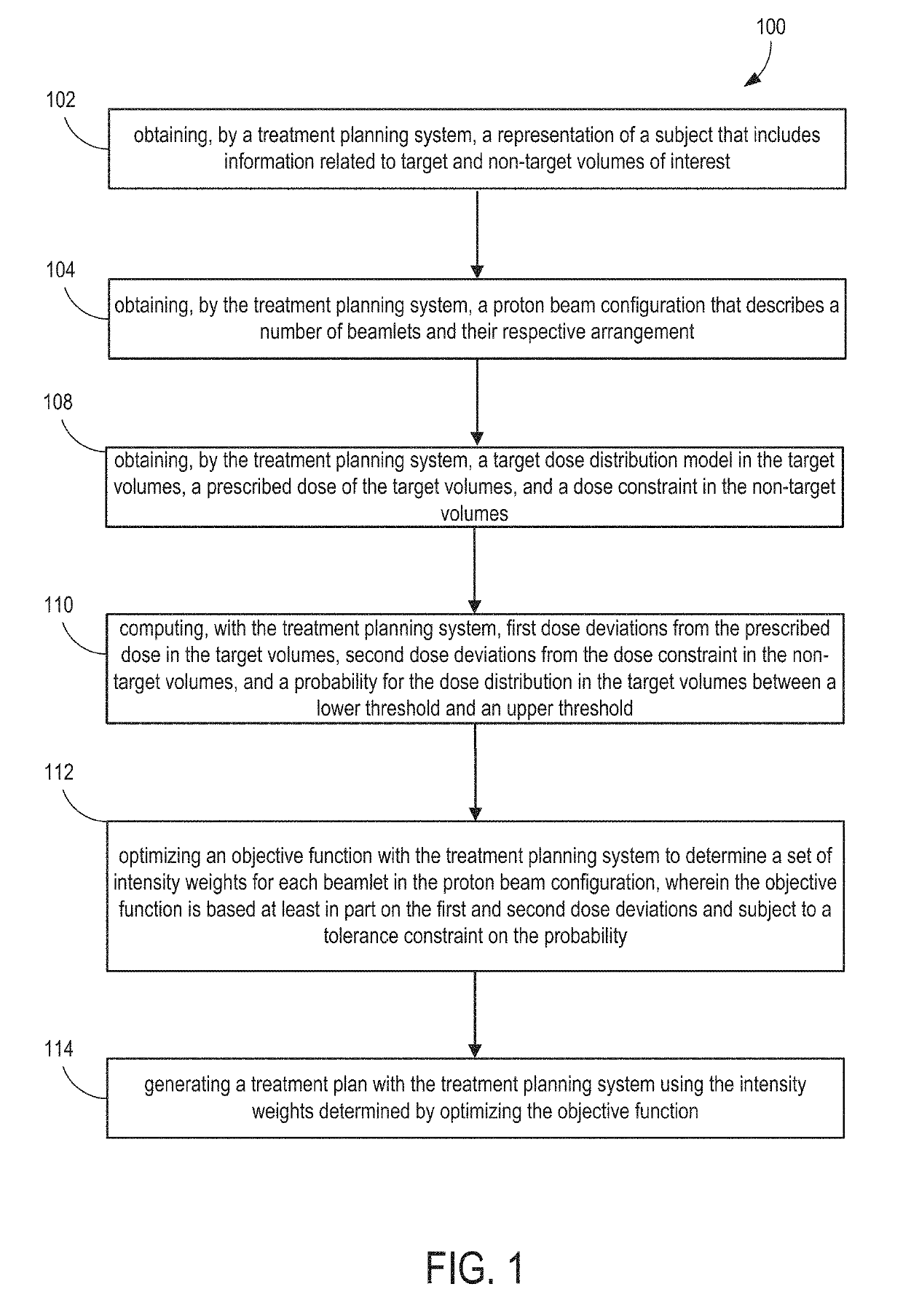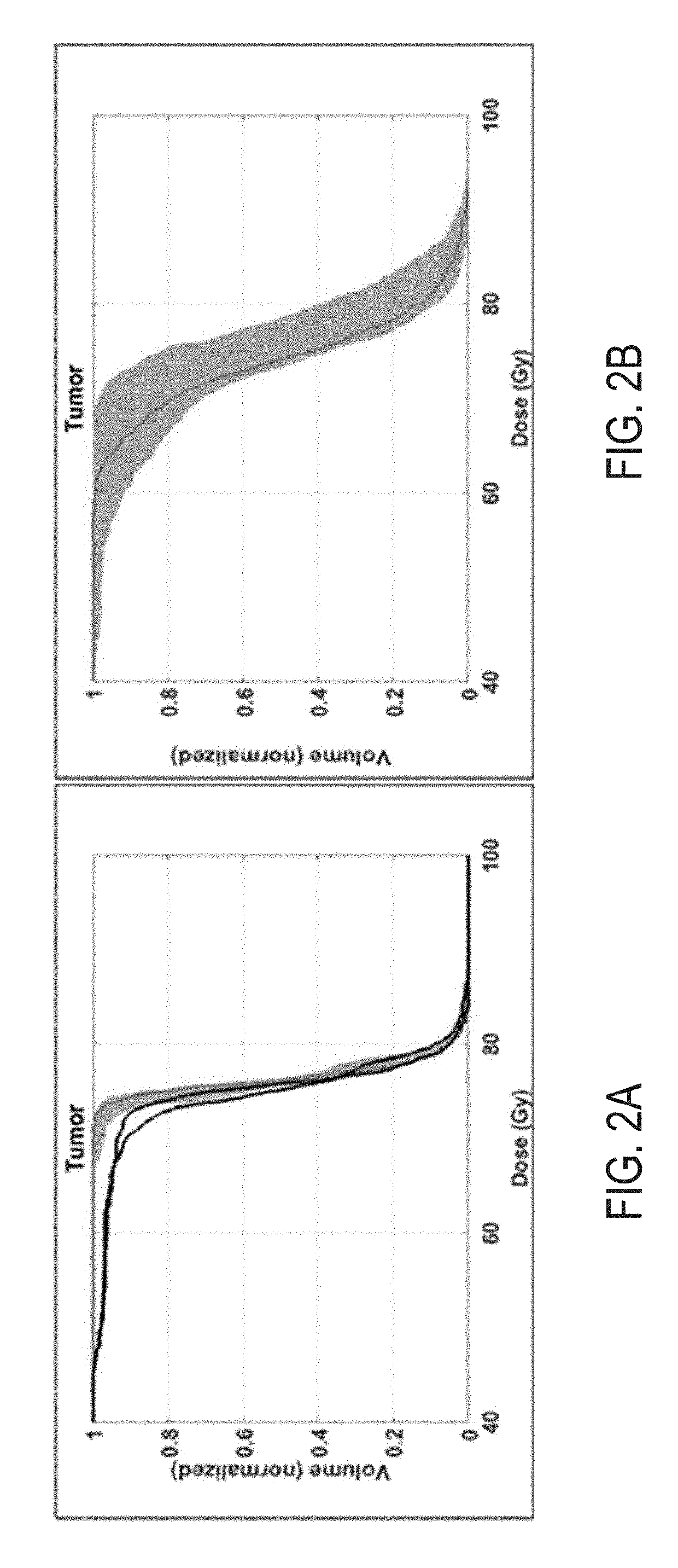System and method for novel chance-constrained optimization in intensity-modulated proton therapy planning to account for range and patient setup uncertainties
a technology optimization method, which is applied in the field of system and method of intensity modulated proton therapy, can solve the problems of compromising the safety and efficacy of treatment, distant metastases and death, and only about 15% of the life of 5 years
- Summary
- Abstract
- Description
- Claims
- Application Information
AI Technical Summary
Benefits of technology
Problems solved by technology
Method used
Image
Examples
Embodiment Construction
[0026]Intensity-modulated proton therapy (“IMPT”) is an advanced form of proton therapy that can achieve highly conformal tumor dose coverage and superior sparing of organs at risk (“OARs”). However, IMPT is highly sensitive to uncertainties, including patient setup, proton range in tissue, respiratory motion, tumor shrinkage, weight loss and so on. As a result, the dose distributions provided by conventional treatment planning systems may differ significantly from the dose distribution delivered within the patient, leading to unforeseen clinical consequences. To derive the highest clinical benefit, it is therefore important to mitigate the influence of uncertainties in the plan generation process in order to deliver particle therapy precisely and predictably.
[0027]In order to address uncertainties, different optimization methods have been proposed. Although such optimization methods have been shown to be effective in rendering IMPT plans less sensitive to some uncertainties, in man...
PUM
 Login to View More
Login to View More Abstract
Description
Claims
Application Information
 Login to View More
Login to View More - R&D
- Intellectual Property
- Life Sciences
- Materials
- Tech Scout
- Unparalleled Data Quality
- Higher Quality Content
- 60% Fewer Hallucinations
Browse by: Latest US Patents, China's latest patents, Technical Efficacy Thesaurus, Application Domain, Technology Topic, Popular Technical Reports.
© 2025 PatSnap. All rights reserved.Legal|Privacy policy|Modern Slavery Act Transparency Statement|Sitemap|About US| Contact US: help@patsnap.com



